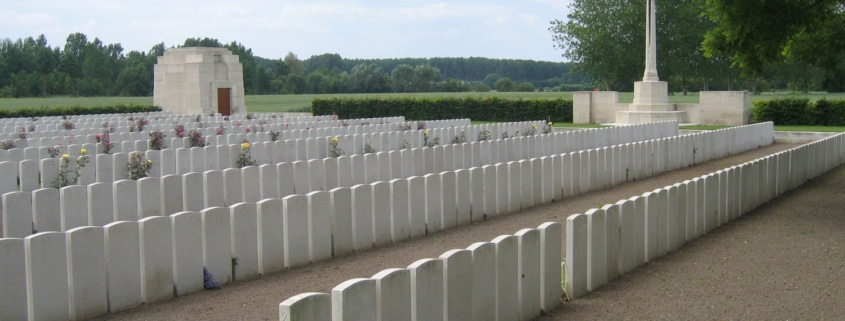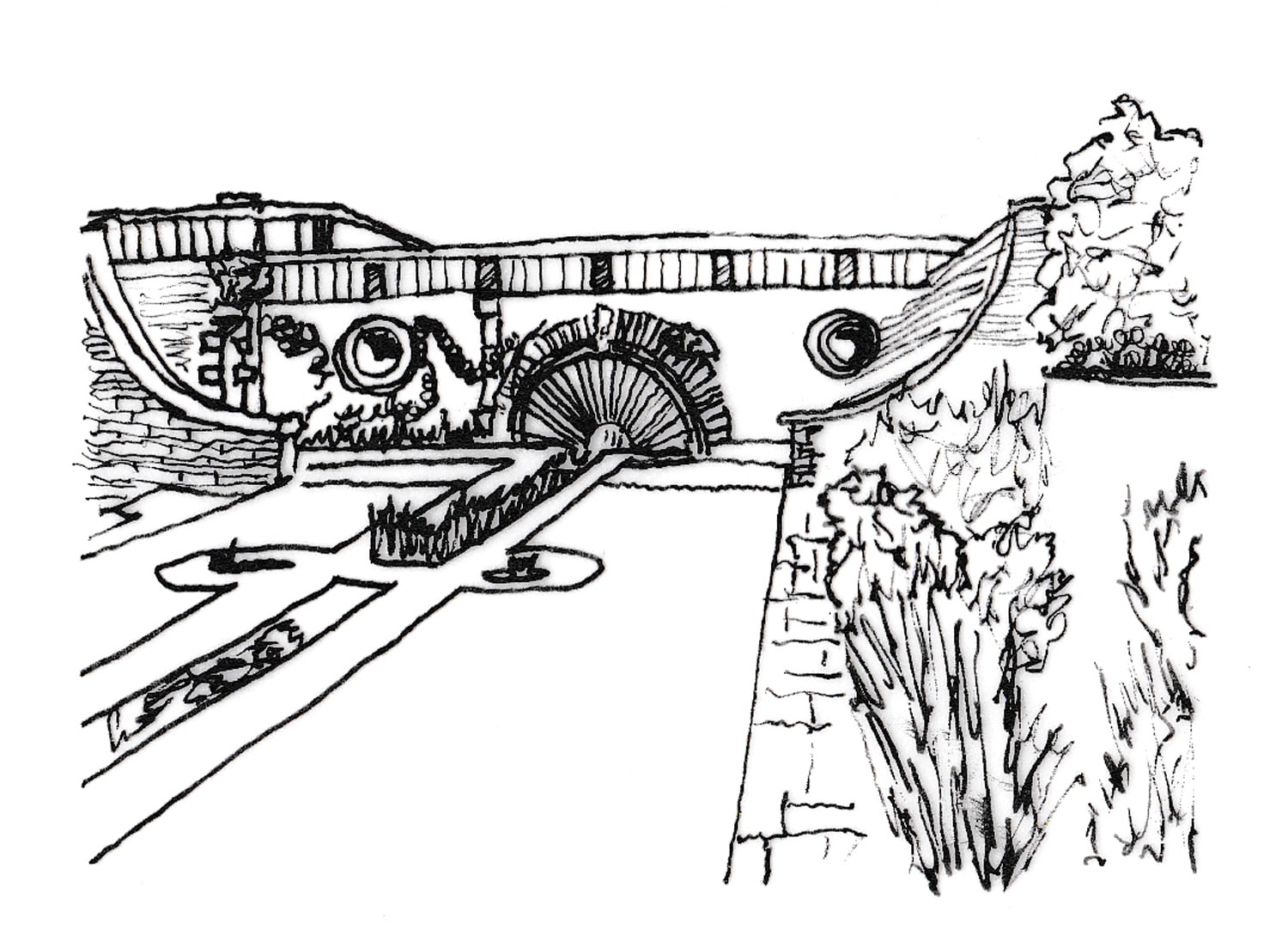
Description
The 21st Casualty Clearing Station was installed in Neuville in April 1916 and remained until March 1917, during the Battle of the Somme. The majority of the graves date from that period. Some graves were added in 1918, during the fighting in the vicinity of the Somme.The cemetery has a remarkable location amidst open arable land west of La Neuville village. Two white pavilions and two large trees characterize the cemetery from the road. At close quarters the white pavilions prove themselves to be two structures with sophisticated details. The cemetery itself is equally striking in that it has a raised platform around the field with graves, with the War Stone, the Cross of Sacrifice and two magnificent acacias.
One of the two pavilions forms the entrance to the cemetery. The other pavilion is a storage space. The cemetery is practically square, and a striking feature is the raised platform that surrounds the field with headstones, with the War Stone and the Cross of Sacrifice opposite one another. What is also remarkable is the size of the acacias. In most cases they would have been replaced by smaller young trees.
The detailing of the modelling of the two pavilions is quite extreme, and in that sense it is exceptional among Lutyens’ cemeteries. In comparison, the other cemetery in Corbie with its two identical buildings, by the architect Holden, shows a far more austere design. Lutyens seeks to achieve a three-dimensional modelling that is largely revealed in the uniform use of materials, whereas Holden harks back to the pure cube form and ‘tries to leave out everything that is not permanent’, as he put it. What is typical of Lutyens is the alternating narrowing at the top of the structural mass and the shallow recesses of the elevations, as are also seen in the War Stone. Inside the pavilion, the high skylight that illuminates the level ceiling is a notable element.
An earlier design is known to exist of this cemetery that is in some respects different from the cemetery as it was eventually realized. Basically, this design is fairly similar, with two entrances on the south side and with four pavilions placed in a square. The two southernmost pavilions, how- ever, were not on the border of the field but near the third row of headstones in order to create equal intermediate distances. In consequence, the War Stone was situated a little farther from the entrance. Willows bordered the cemetery. Two groups of six willows, each in the middle of the field with headstones, also formed a remarkable feature. Flanking the War Stone were two pyramidal oaks. The four pavilions were raised in brick with a plinth and cordon of white natural stone, a material often applied by Lutyens. Gertrude Jekyll added a few suggestions on the drawing, where Lutyens had already sketched in the location and shape of the trees. She proposed a grove of Lombardy poplars, holly and birches on the north side. Furthermore, she planted the north and south sides with roses. At the edge, the greenery was concentrated along so-called ‘border- walks’ as well as in two rows at the back of the headstones, along the central path.
The ground of the present cemetery is level with the road, but on three sides a raised part, accessible via three steps, has been constructed. The impression created is that the cemetery lies deeper, an effect Lutyens had tried out previously before in his design for Hestercombe Garden.
A beech hedge, combined with edging in stone, surrounds the cemetery. The entrance is part of the pavilion that is the farthest removed from the route, a device often applied by Holden, for one, to intensify the introduction to the cemetery. A stoop of natural stone projects from the entrance pavilion. The cemetery is of a regular layout with rows of stones reflected round the central axis, with the Cross of Sacrifice and the War Stone at the ends. The War Stone is on the east side, the headstones face north and south. Two axes, of which the entrance axis is the more important, are at right angles to the central axis.
The original greenery design with the willows bordering the cemetery has been abandoned. It is now dominated by two beautiful, large acacias planted asymmetrically on the north side. The roses in front of the headstones are pink in colour, except for yellow roses in the middle row. (Geurst, 2010, pp.345-7)
Bibliography
Geurst, J. (2010) Cemeteries of the Great War by Sir Edwin Lutyens. Rotterdam: 010 Publishers.Also Cited In
Listing Grade
Coming soonListing Reference
Client
Imperial War Graves Commission


